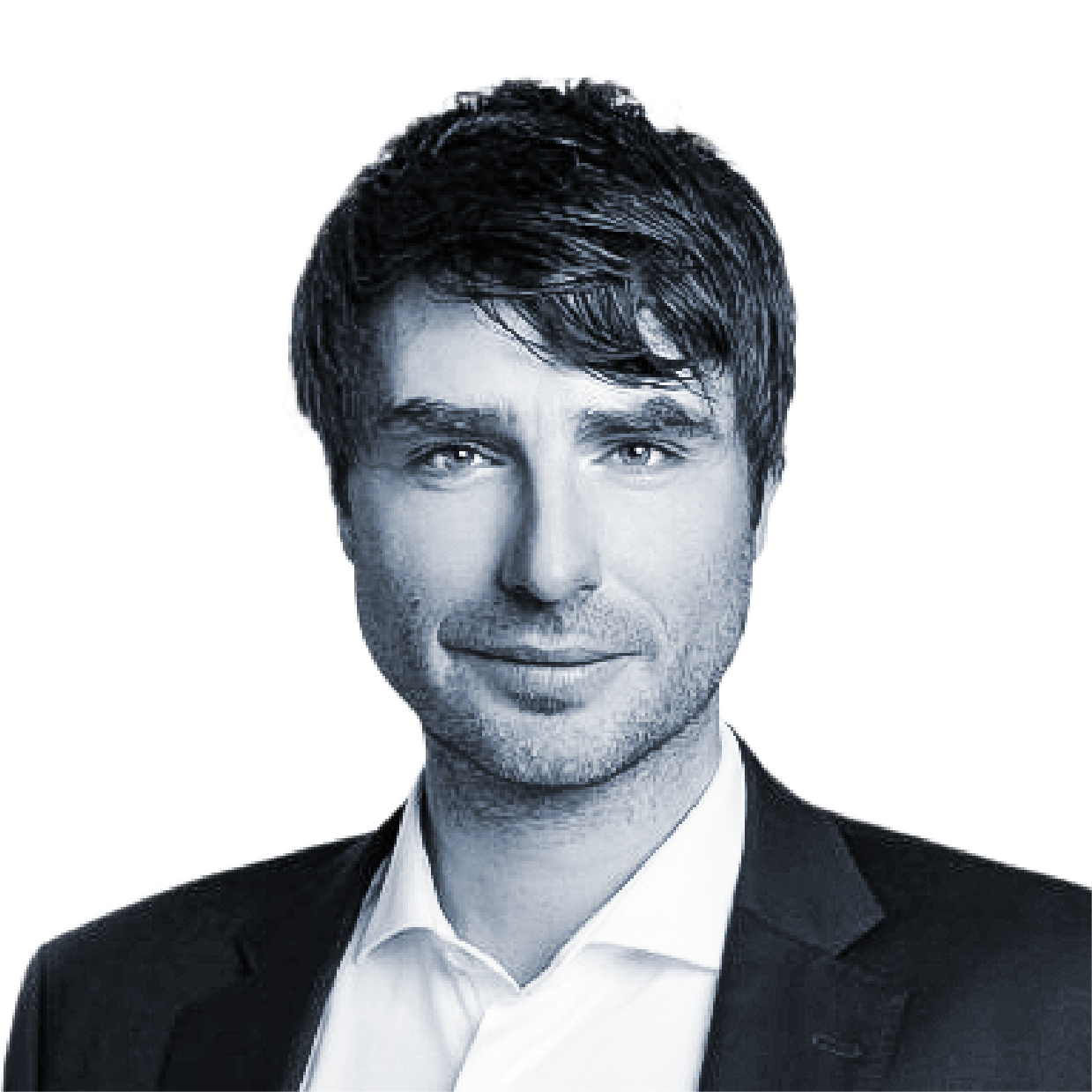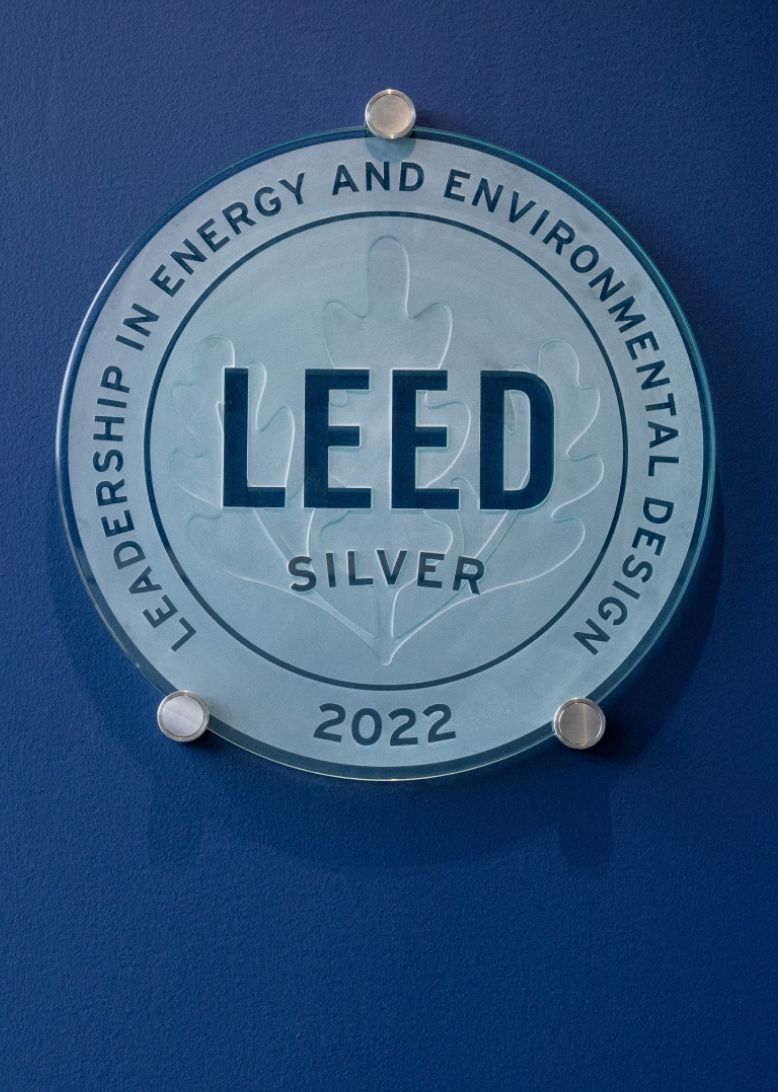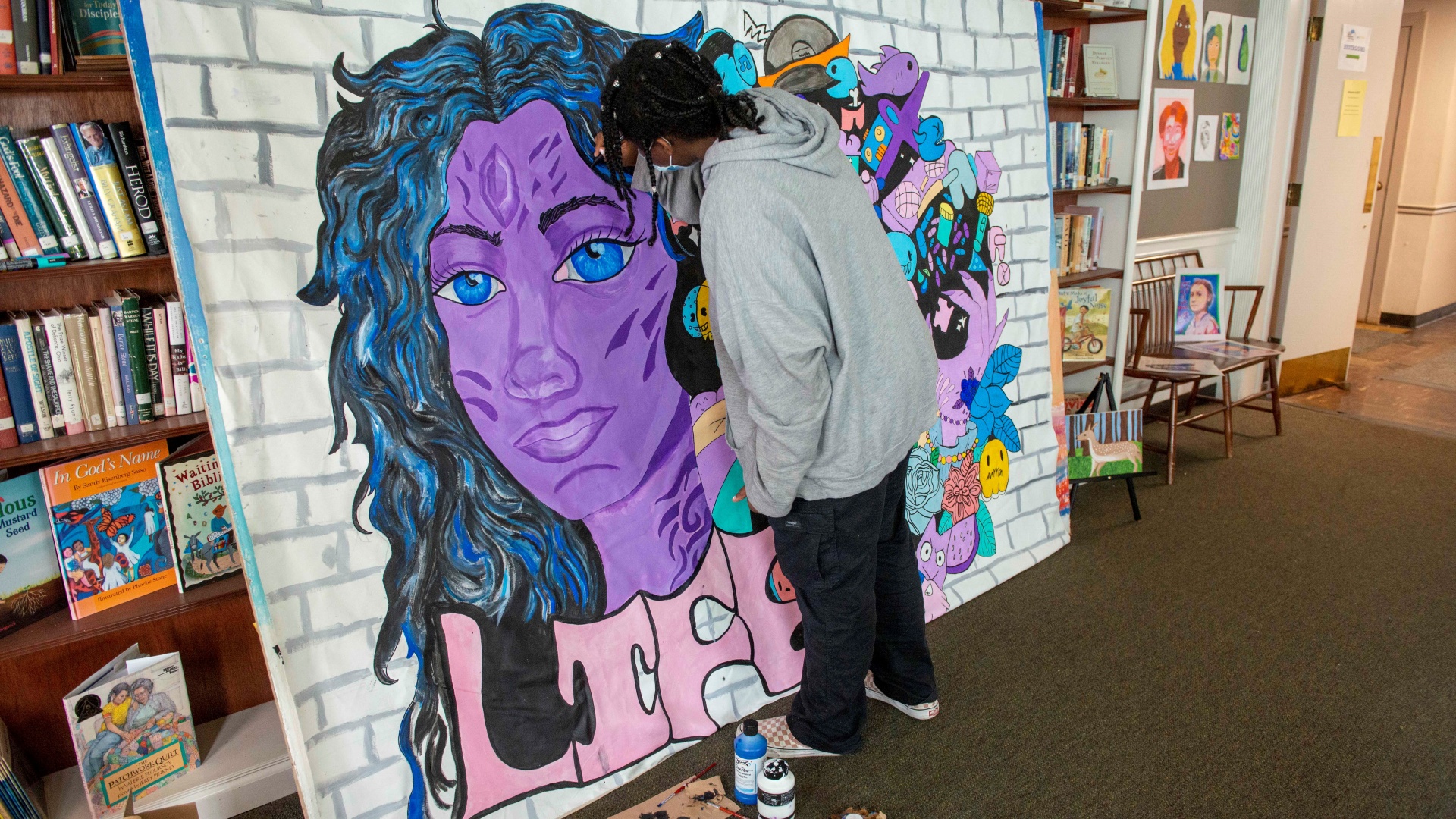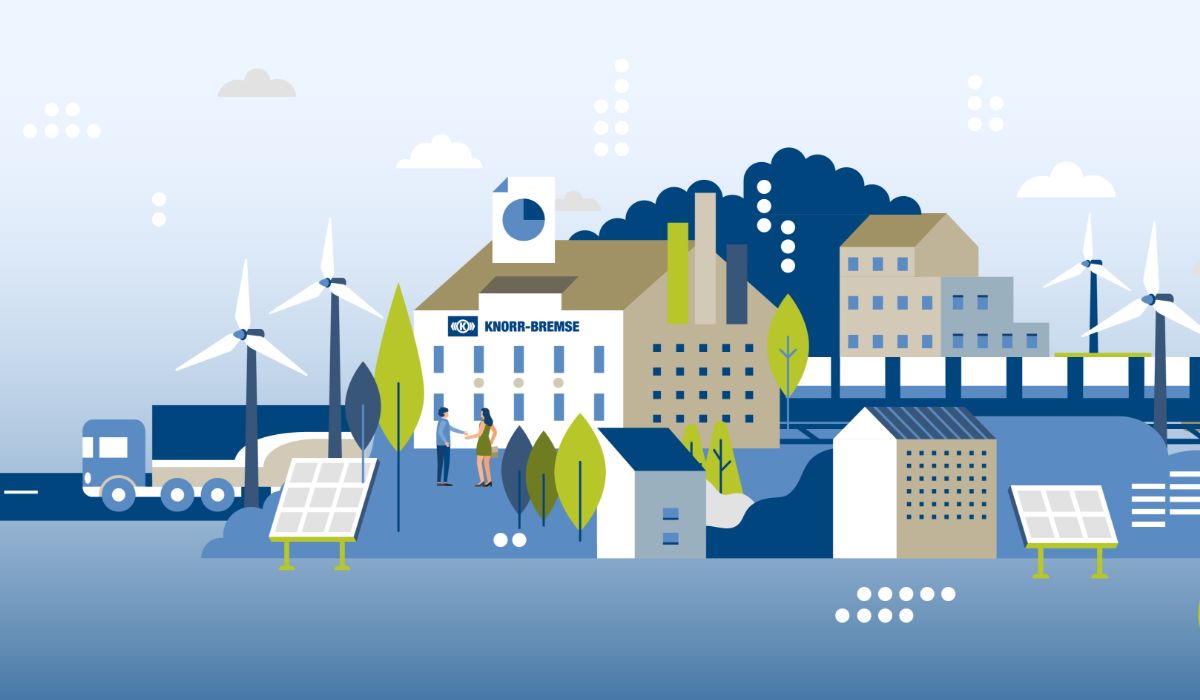


International Sustainability Strategy, Local Implementation: Insights from America
Sustainability management – in all its facets – is a global task. Marcus Hoffmann, Vice President ESG at Knorr‑Bremse, and Maria Gutierrez, Senior Director ESG at Bendix, are convinced that the combined strengths of global and local sustainability management are crucial for realizing the company’s ambitious targets. How can this be done? With a shared understanding of sustainability globally, good organization, buckets of enthusiasm, and advice from Spiderman.
Maria Gutierrez
has worked for Bendix since 1997 and is the cross-divisional HSE coordinator for Knorr‑Bremse’s Americas region. In her role as Senior Director ESG at Bendix, Maria Gutierrez has achieved a lot in terms of environmental protection and employee activities at the manufacturing sites.
Marcus Hoffmann
Vice President ESG, has headed Knorr‑Bremse’s Sustainability department since October 2022. The global dimension and the wide range of sustainability topics at Knorr‑Bremse are a particularly motivating challenge for him.
Anyone who reads or listens to the news these days will undoubtedly come across the various global environmental and social challenges we are all facing. The sustainability performance of a company is therefore increasingly coming under scrutiny. In a corporate context, the three-letter acronym ESG [environment, social, and governance], a guardrail defining a set of criteria, is receiving more attention. Yet why are these criteria so important for Knorr‑Bremse?
Marcus Hoffmann: Knorr‑Bremse has already been pursuing active sustainability management since 2008. Back then, we incorporated different sustainability aspects into our organization and progressively expanded our internal structures and processes. Today, we benefit from this long-standing basis. With increasing stakeholder and reporting requirements, the ESG criteria serve to provide a clear structure for sustainability-related topics and effectively support their efficient management. This is crucial since it provides more guidance in an increasingly complex environment and makes it easier to identify and manage ESG-related risks and opportunities. ESG thus creates transparency and comparability for internal and external stakeholders and underlines the importance of sustainability for the long-term success of a company.
Think globally, act locally – presumably the same goes for the sustainability strategy?
Marcus Hoffmann:
Absolutely. As a company, we strive to enable safe and sustainable mobility – with our products, our processes, and the innovative spirit of our employees. Our overarching global sustainability strategy is developed in Munich by our Corporate Sustainability Department in close collaboration with the various specialized departments across the company. In this context, our Group ESG Board acts as a guiding body that constantly challenges the status quo as well as the way forward and provides further ideas for the efficient achievement of the agreed targets
(Organizational Structure for Sustainability). The ESG Board is thus an important interface between the Knorr‑Bremse Group, the divisions, and regional coordinators. Incorporating the viewpoints and arguments from these stakeholders is especially important because ultimately the ESG strategy and most of the respective activities are implemented at a local level.
Mrs. Gutierrez, how are you adapting the global sustainability strategy at the Bendix locations in the Americas?
Maria Gutierrez: We are all pieces of the puzzle – and in order for Knorr‑Bremse to be successful, we have to figure out how we all fit in it. Structurally, we have implemented an organizational structure for ESG at Bendix, built by a very ambitious team full of central specialists and the locations reporting to this team. Strategically, in the Americas, we apply the global Knorr‑Bremse sustainability framework and define our tactical regional plan. For a corporate vision or goal – like zero injuries or net zero – we create a road map and identify specific actions for our locations.
Can you give us an example?
Maria Gutierrez: Take safety, for instance, where our goal is to reduce incidents. Each location implements various actions which are based on their specific risks such as ergonomics, machine guarding, material presentation, or culture. Today, our total case incident rate (TCIR) is far below the industry average. A key factor behind this figure is our consistent awareness of routines and campaigns at all locations.

We can only tackle global challenges such as climate change, extreme weather, or social inequality by thinking globally and acting locally.
Maria Gutierrez
Energy treasure hunt at the Bendix Bowling Green plant The energy treasure hunt is a three-day event intended to lower energy costs and reduce carbon emissions, sponsored by the US Department of Energy. In Bowling Green, 17 employees went looking for energy savings potential in production. This allowed structural air leaks to be identified with containment that helped to render an entire air compressor unnecessary. It’s nothing short of a treasure trove with potential energy and gas savings of 1.6 tons of CO2e and a value of over $250,000.
LEED Silver certification for the headquarters of Bendix (2022) LEED (Leadership in Energy and Environmental Design), administered by the U.S. Green Building Council, is the most widely used green building rating system in the world. The energy efficiency of the building was and is particularly important to Bendix. High-efficiency lighting, windows, insulation, and HVAC equipment help reduce overall energy consumption in the building by over 18% compared to similar buildings.
Photovoltaic installation in Huntington The 1,168-megawatt PV installation at Huntington, Indiana, completed its first full year of operation in 2022. At full capacity, the project can produce 1.5 million kilowatt-hours of electricity annually from its 2,612 solar panels. In 2022, the installation was satisfying 30% of the electrical demand at Huntington Plant 1. The self-generated energy provided a 19% reduction in the campus’ carbon footprint. And by producing this energy, Bendix saved more than $140,000 in energy costs – well above the company’s original estimates.

LEED Silver certification for the headquarters of Bendix (2022) LEED (Leadership in Energy and Environmental Design), administered by the U.S. Green Building Council, is the most widely used green building rating system in the world. The energy efficiency of the building was and is particularly important to Bendix. High-efficiency lighting, windows, insulation, and HVAC equipment help reduce overall energy consumption in the building by over 18% compared to similar buildings.

Energy treasure hunt at the Bendix Bowling Green plant The energy treasure hunt is a three-day event to save energy costs and reduce carbon emissions, sponsored by the US Department of Energy. In Bowling Green, 17 employees went looking for energy savings potential in production. This allowed structural air leaks to be identified with containment that helped to render an entire air compressor unnecessary. It’s nothing short of a treasure trove with potential energy and gas savings of 1.6 tons of CO2e and a value of over $250,000.

Photovoltaic installation in Huntington The 1,168-megawatt PV installation at Huntington, Indiana, completed its first full year of operation in 2022. At full capacity, the project can produce 1.5 million kilowatt-hours of electricity annually from its 2,612 solar panels. In 2022, the installation was satisfying 30% of the electrical demand at Huntington Plant 1. The self-generated energy provided a 19% reduction in the campus’ carbon footprint. And by producing this energy, Bendix saved more than $140,000 in energy costs – well above the company’s original estimates.
Mr. Hoffmann, currently one major challenge is to implement new or upcoming European ESG-related regulations such as the CSRD. How is their acceptance worldwide?
Marcus Hoffmann: The EU Corporate Sustainability Reporting Directive [CSRD] is a regulatory framework that imposes a broad bandwidth of legally binding ESG management and reporting requirements. The CSRD aims to standardize the disclosure of nonfinancial information and, in parallel, to increase the transparency and comparability of a company’s ESG performance. For a global player like us, European directives naturally have a direct impact on our sustainability management globally because we ultimately need to report for the entire Group. While imposing considerable administrative effort and complexity, the idea behind the CSRD is a good one. The information to be disclosed helps the company as well as the local level to dive deeper into critical ESG topics and identify relevant risks and opportunities as well as their status. In this context in particular, we need to clearly communicate the advantages of such regulations as the procurement of information and data requires local commitment and good organization. Are European regulations more of a driver or a burden, Maria?
Maria Gutierrez: I’ll start by looking at the big picture. We can only tackle global challenges such as climate change, extreme weather, or social inequality if we think globally and act locally. That’s why I think the regulatory framework is a necessary evil. It will require additional effort from our side, but it is needed. We as corporations have a responsibility to help solve the problems of the world and, furthermore, we as a public company have to act and report transparently for the benefit of our stakeholders.
Does the central sustainability strategy adequately take the local conditions into account?
Maria Gutierrez: We understand the focus in Munich is to create global strategies, and it is a challenge to keep everyone informed. The key to making this work successfully is collaboration from both sides. In the Americas region, we took a very proactive approach. We try to stay informed of developments and we proactively reach out to Munich. We ask for updates to understand potential future impacts and we offer information before it is requested. Nevertheless, one goal could be to create an even more formal network between regions and locations. We have intensified the exchange of best practices in our region.
Does this mean you are connecting regionally and across divisions?
Maria Gutierrez: Exactly, the aim must be to leverage many synergies in the form of common tools between the locations. The locations’ Health, Safety, and Environment [HSE] challenges are very similar; we don’t have to reinvent the wheel. During our Global Zero Waste initiative, we identified a plethora of best practices that could easily be transferable and implemented at many other locations. In 2023, we were determined in working with our sister company in the Rail Vehicle Systems division in the Americas. A highlight was our first joint annual HSE conference for the Americas region; our Brazilian location also took part.
Was Knorr‑Bremse’s 2030 Climate Strategy a topic at the conference?
Maria Gutierrez:
Very much so, as we all wish to contribute to reducing Knorr‑Bremse’s carbon emissions by 2030. The important areas on which Bendix has focused its efforts are related to HVAC, compressed air, and lighting. For several years, we have also focused on carbon emission reductions by adding the lever of onsite renewable energy generation. We were strategic in identifying the locations where it made financial sense – due to local incentives, cost, labor, sunlight availability, or other matters. Bendix now has three photovoltaic array systems in operation
(New photovoltaic systems produce electricity for production facilities).
There are shared goals uniting the regions. Does this also apply to your Group-wide diversity, equity, & inclusion [DEI] strategy?
Marcus Hoffmann: The strategy is currently being rolled out and our goal is to reach each and every employee around the world. Our job at a Group level is to communicate the benefit of diversity for the company and even society. In every country, you’ll find some people who are critical of our company’s mindset – this is something we have to accept and think about. However, it will not affect our intrinsic motivation to contribute to sustainable development by acting responsibly toward our employees, business partners, the environment, and society. After all, we firmly believe that this is important for our company’s success. And to be clear, we can only be successful if we make use of the know-how, commitment, and experience of our colleagues. Maria, how do you see it?
Maria Gutierrez: A common thread of ours as a company is corporate responsibility, and this applies in particular to DEI. We are all unique individuals with personal life experiences that make us perceive the world in different ways. In this lies the power of diversity and inclusion, provided we are able to harness all these different perspectives to be more agile, creative, innovative, and, ultimately, successful. I also have an individual biography as a female engineer, single mother, and immigrant. All these experiences have shaped my life. Now, in my current position, I see it as part of my responsibility to create a good environment for other people to develop personally and professionally.

What’s important to me is to consistently show that sustainability creates value for the company, for our business partners, and for society as a whole. This will accelerate awareness and commitment – professionally and privately – even further.
Marcus Hoffmann
Do you see many employees also feeling personally driven towards sustainability?
Marcus Hoffmann: There is an incredible number of committed employees at Knorr‑Bremse, whether in product development and EcoDesign, purchasing, supply chain management, HSE, or sales. It is encouraging to see how activities are executed in the locations globally and Bendix is leading the way on a broad range of topics. Concretely, I am thinking here of the staff’s Local Care commitment with volunteering and the Get Involved program, as well as of the Green Team at Bendix. These are environmental ambassadors within the workforce who initiate environmental campaigns within the company, for example. In addition, Employee Resource Groups, i.e., interest groups initiated voluntarily and led by employees, have taken another leap forward by covering topics such as veterans or pride [LGBTQIA+] and caring for dependents. The Group-wide women’s network “woman@” exists in North America, too, of course.
Maria Gutierrez: I would also like to recognize the commitment of our employees to volunteering in social projects. Along with all forms of financial and material support, Bendix team members volunteered close to 9,500 service hours in 2023. Among all the wonderful projects, I want to mention the homebuilding project for families in need in Ohio. Last year, 200 employees were involved in the project as volunteers (With hearts and hands: Social commitment at Knorr-Bremse’s sites) The number and long-term nature of our projects show that our community support efforts are not one-off events, but rather are part of who we are as an organization.
Health center at the Huntington site Since September 2023, the center, operated in partnership with Marathon Health LLC, has been caring for employees and their family members. A nurse practitioner and medical assistant provide preventive, primary, and acute care services, follow-up care, and referrals. Other services include health assessments, health coaching, medication dispensing and support, lab tests, handling of chronic conditions, and educational offerings.
Zero Waste to Landfill Laying the groundwork for Bendix’s zero-waste program is a continuously evolving ISO 14001-certified environmental management system. The program uses a detailed self-certification process where each location must meet several requirements related to waste management, waste diversion, and continuous improvement to verify that the site is diverting 100% of its waste from landfill. Eight Bendix manufacturing locations and the headquarters succeeded in achieving the company’s official Zero Waste to Landfill certification.
Diversity, Equity, & Inclusion (DEI) Day 2023 in Avon A keynote speech by Maria Gutierrez set the tone for the importance of Diversity, Equity, & Inclusion for the company. Various communication activities as well as a scavenger hunt encouraged employees to get to know each other. The Employee Resource Groups, employee-led networks that promote diversity and inclusion, sent out invitations to their “Open Day”. For example, the women’s network women@Bendix reported on its activities and goals in the US and Mexico.
The social commitment of Global Care Knorr‑Bremse Global Care North America Inc. (KBGCNA) was founded five years ago. Since then, this philanthropic organization has granted a total of $2.62 million for 32 projects. One example is the financial support for the Boys Hope Girls Hope organization in northeast Ohio. It provides educational programs for students who have recently graduated from high school and are pursuing postsecondary education.

Ten years of the health center at the Huntington site Since September 2023, the center, operated in partnership with Marathon Health LLC, has been caring for employees and their family members. A nurse practitioner and medical assistant provide preventive, primary, and acute care services, follow-up care, and referrals. Other services include health assessments, health coaching, medication dispensing and support, lab tests, handling of chronic conditions, and educational offerings.

Zero Waste to Landfill Laying the groundwork for Bendix’s zero-waste program is a continuously evolving ISO 14001-certified environmental management system. The program uses a detailed self-certification process where each location must meet several requirements related to waste management, waste diversion, and continuous improvement to verify that the site is diverting 100% of its waste from landfill. Eight Bendix manufacturing locations and the headquarters succeeded in achieving the company’s official Zero Waste to Landfill certification.

Diversity, Equity, & Inclusion (DEI): DEI Day 2023 in Avon, US A keynote speech by Maria Gutierrez set the tone for the importance of Diversity, Equity, & Inclusion for the company. Various communication activities as well as a scavenger hunt encouraged employees to get to know each other. The Employee Resource Groups, employee-led networks that promote diversity and inclusion, sent out invitations to their “Open Day”. For example, the women’s network women@Bendix reported on its activities and goals in the US and Mexico.

The social commitment of Global Care Knorr‑Bremse Global Care North America Inc. (KBGCNA) was founded five years ago. Since then, this philanthropic organization has granted a total of $2.62 million for 32 projects. One example is the financial support for the Boys Hope Girls Hope organization in northeast Ohio. It provides educational programs for students who have recently graduated from high school and are pursuing postsecondary education.
What is particularly important to you personally in terms of sustainability, in addition to the company’s targets?
Marcus Hoffmann: What’s important to me is to consistently show that sustainability creates value for the company, for our business partners, and for society as a whole. This will accelerate awareness and commitment – professionally and privately – even further. We can ask ourselves, “What does sustainability thrive on?” and, “How can I contribute with my expertise, attitude, and commitment?” Many employees around the world have already taken a positive approach to this and are actively working toward greater sustainability and inspiring others. We have also discussed this with a number of such colleagues (Smart minds worldwide: Together for sustainable mobility). Looking around with open eyes and an open mind, you can see that the global challenges we face are becoming more urgent day by day. Technological innovation in parallel with intrinsic motivation to change things for the better are key to finding sufficient solutions. I want to play a part in leaving behind a livable world for my children and everyone else’s.
Maria Gutierrez: “With great power comes great responsibility” – if one thing, I at least have in common with Spiderman a belief in the truth of these words. As a business, we have the responsibility to be a good corporate citizen and have an impact on the economic, social, and environmental challenges of our time. We have the resources, the knowledge, and the power to make a difference. I believe that my role is to be that inner voice or compass and to encourage and coach our business leaders. Our world needs transformational change, and change starts with action. What better way than to start with action in our own backyard?
Thank you for this interesting interview.
About Bendix
As a subsidiary of Knorr‑Bremse, Bendix and its 4,400 employees provide leading-edge vehicle safety solutions for truck, bus, and other commercial vehicle customers in North America. Bendix develops and supplies active safety technologies from compressors to wheel-end and energy management solutions, as well as air brake charging and control systems and components for medium- and heavy-duty trucks throughout North America. Bendix Commercial Vehicle Systems is headquartered in Avon, Ohio, with manufacturing plants in Acuña, Mexico, and Bowling Green, KY; Hanover, PA; Huntington, IN; Lebanon, TN; and Wytheville, VA, in the United States.


